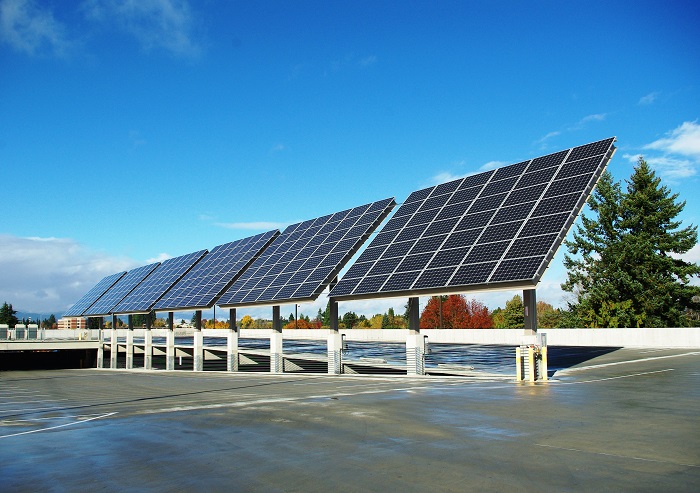“Hydricity” uses solar concentrators to focus sunlight for the purposing of superheating water to achieve two things: one, operate a series of steam turbines which, in turn, generate electricity, and two, power solar generators for the purpose of splitting the water into hydrogen and oxygen. The separated hydrogen is then stored away and used later on during the night hours to power the aforementioned steam turbines.
The combination of all green energy producing technologies, if you will, presents a whole new solution for constant — and clean — power generation.

“The proposed hydricity concept represents a potential breakthrough solution for continuous and efficient power generation,” said Rakesh Agrawal, Purdue University's Winthrop E. Stone Distinguished Professor in the School of Chemical Engineering, who worked with chemical engineering doctoral student Emre Gençer and other researchers on this idea. “The concept provides an exciting opportunity to envision and create a sustainable economy to meet all the human needs including food, chemicals, transportation, heating and electricity.”
By superheating the water — in this case, it went from 1,000 to 1,300 degrees Celsius — the team produced a high-temperature steam to run the turbines and also operate the solar reactors tasked with splitting the water into hydrogen and oxygen.
“In the round-the-clock process we produce hydrogen and electricity during daylight, store hydrogen and oxygen, and then when solar energy is not available we use hydrogen to produce electricity using a turbine-based hydrogen-power cycle,” explained Mohit Tawarmalani, a professor and Allison and Nancy Schleicher Chair of Management at Purdue's Krannert School of Management, and a contributor to this study. “Because we could operate around the clock, the steam turbines run continuously and shutdowns and restarts are not required. Furthermore, our combined process is more efficient than the standalone process that produces electricity and the one that produces and stores hydrogen.”
“Traditionally electricity production and hydrogen production have been studied in isolation, and what we have done is synergistically integrate these processes while also improving them,” Agrawal added.
While there hasn’t been any sort of actual experimentation done to prove this concept, several simulations have been conducted using models, and they’ve all proven successful.
“The overall sun-to-electricity efficiency of the hydricity process, averaged over a 24-hour cycle, is shown to approach 35 percent, which is nearly the efficiency attained by using the best photovoltaic cells along with batteries,” Gençer said. “In comparison, our proposed process stores energy thermo-chemically more efficiently than conventional energy-storage systems, the coproduced hydrogen has alternate uses in the transportation-chemical-petrochemical industries, and unlike batteries, the stored energy does not discharge over time and the storage medium does not degrade with repeated uses.”
Agrawal said, “The concept combines processes already developed by other researchers while also improving on these existing processes. The daytime and night-time systems would use much of the same equipment, allowing them to segue seamlessly, representing an advantage over other battery-based solar technologies.”
To learn more, request a copy of the team’s paper, entitled “Hydricity: A Sunshine Route to Sustainability”.
Advertisement
Learn more about Electronic Products Magazine





